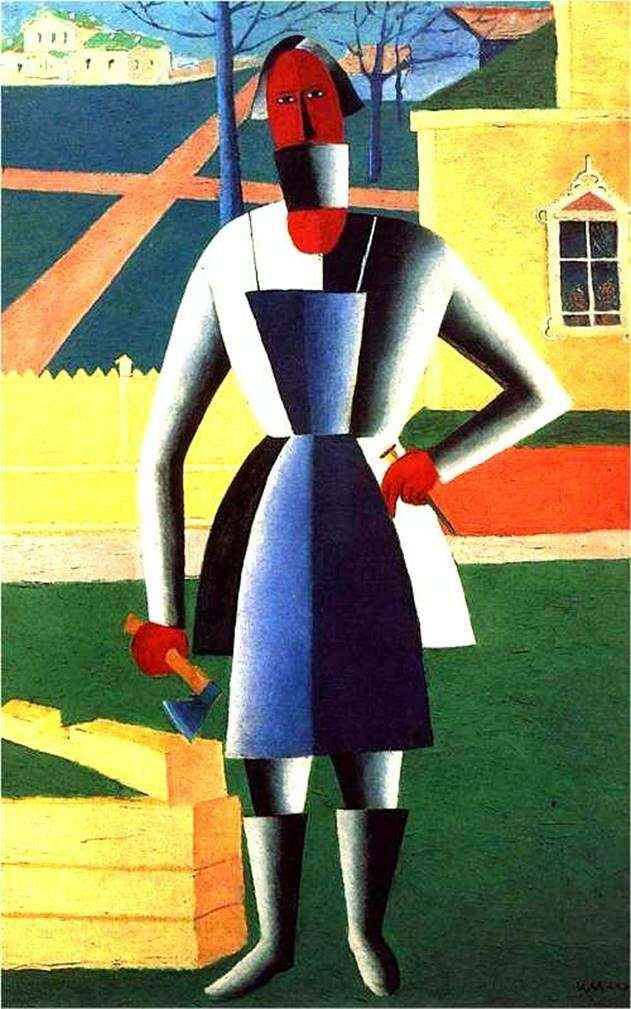
The feeling of peace, purification, protection carries this picture. Perhaps it can be called the “icon of the new time.” Everything speaks about it: frontality, flatness, selection of large main elements, undisputed symbolism of color, reverse perspective, presence of the cross, and, of course, a direct association with Christ, who was the son of a carpenter in mortal life.
The very vertical format of the picture adjusts to a sublime way. The look follows from the bottom upwards from the character’s feet, through his arms, his head, then the cross and the trunks of the trees. The effect is enhanced by three sonorous vertical spots of yellow, rather golden, unearthly color.
The most important vertical is the figure of a carpenter, which is covered in four colors, black, white, red and blue. Black, the color of beginning, emptiness and death is completely balanced by white, the color of development, eternity, purity. Red and blue are saturated, deep, rather minor. Such blue is calm, contemplative, it is divided into a lighter, shrill striving for white. Spirituality and knowledge leading to eternity? Red can personify the very nature of life, in its tireless activity, hidden power. This word life energy comes from the character’s hand, extends beyond the picture.
Large space is given to green color, meaning renewal, the ability to restore life. It is not by chance that the spring state is transmitted in the picture. The grass is already green, but the trees have not yet budded. The sky is full of bottomless wet blue and the sun covers gold all around…
The noble statics is enlivened by several diagonals, the main of which is the cross. The cross here is the way of life, the choice of a person, and his place in the world. This large form could violate the space of the picture, going beyond its limits, and the artist limits it at first to the horizontal of the fence, and then to the opposite diagonal of the board and the ax.
K. Malevich already wrote a similar image in 1927. That picture, of course, also beautiful and expressive, contains more minor, random details, which bind it to the sense of time. The “Carpenter” of 1929 is already out of time, out of real space.
Written shortly before death, this picture bears the tone of summarizing the earthly path. “Carpenter” is most likely not only a religious picture, but also an image of a modern artist of a man. The one who creates his own life path and takes responsibility for it.
 The head of a peasant by Kazimir Malevich
The head of a peasant by Kazimir Malevich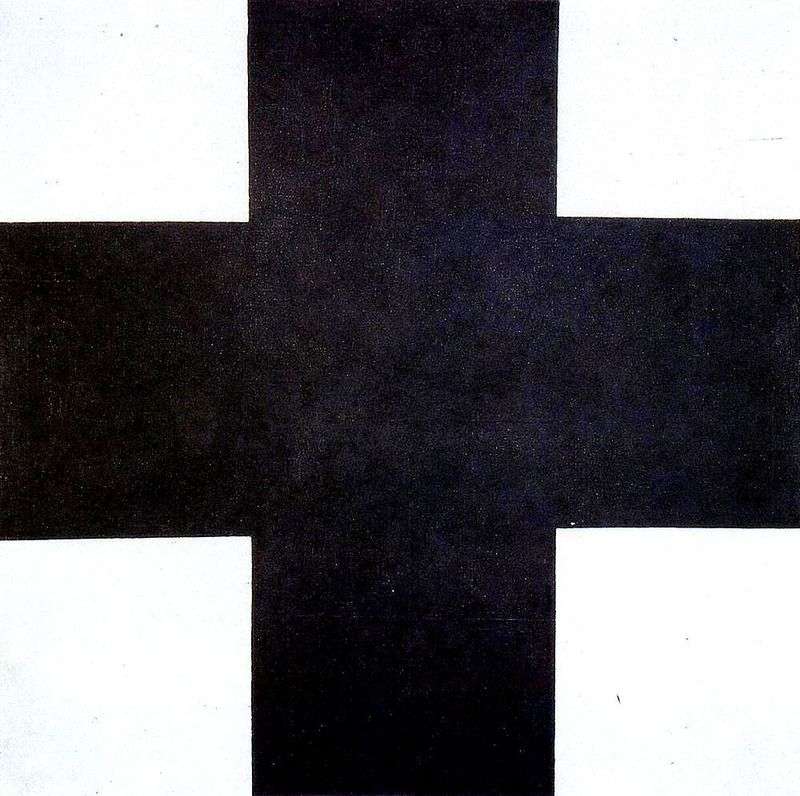 Black Cross by Kazimir Malevich
Black Cross by Kazimir Malevich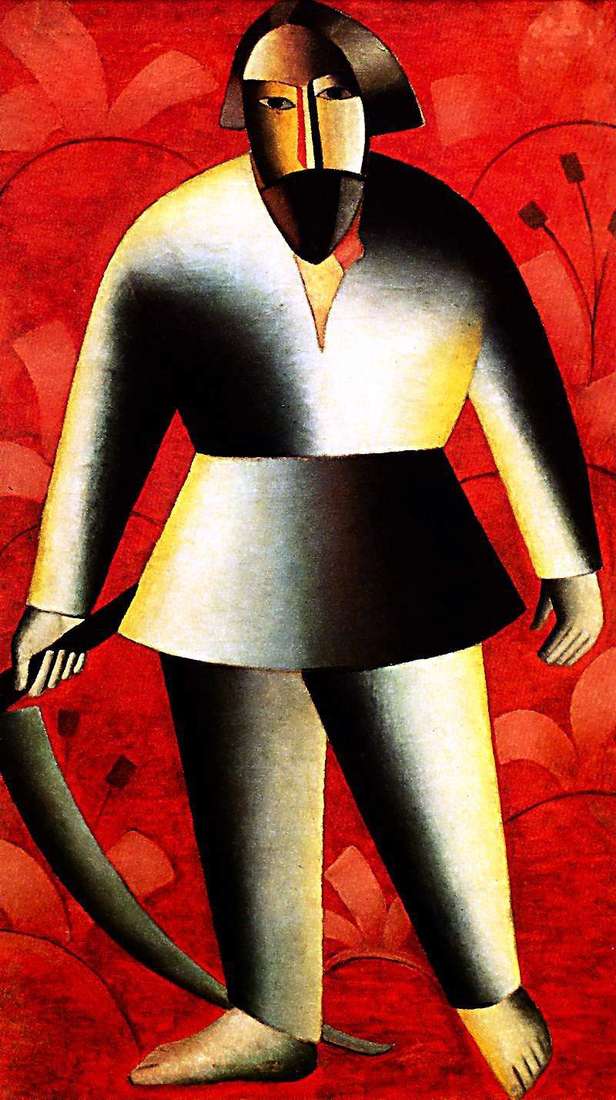 The Peasant (Kosar) by Kazimir Malevich
The Peasant (Kosar) by Kazimir Malevich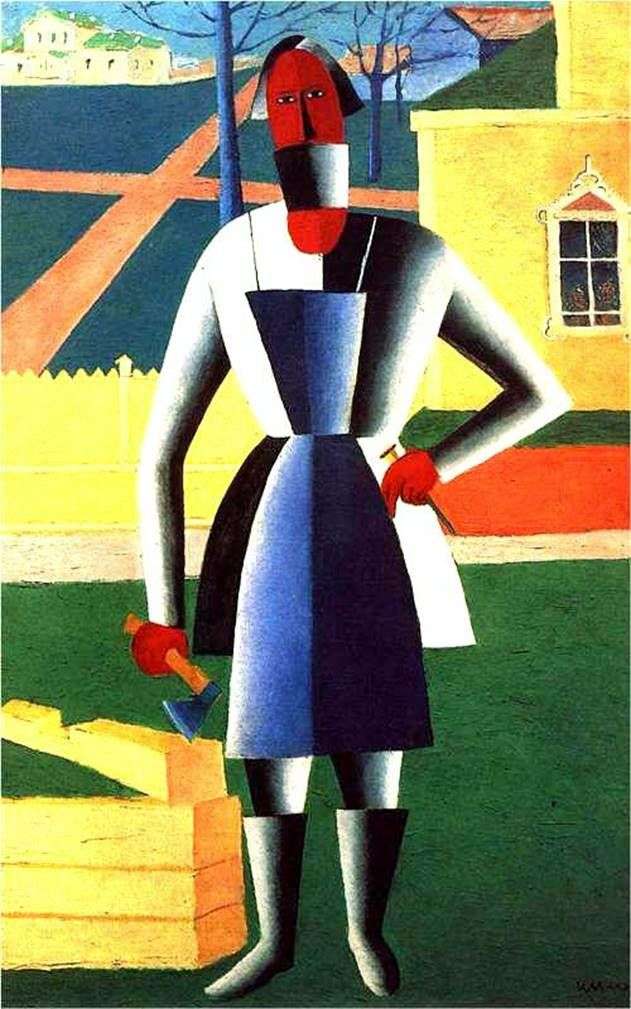 Plotnik – Kazimir Malevich
Plotnik – Kazimir Malevich Relaxation. Society in Cylinders by Kazimir Malevich
Relaxation. Society in Cylinders by Kazimir Malevich Spring by Kazimir Malevich
Spring by Kazimir Malevich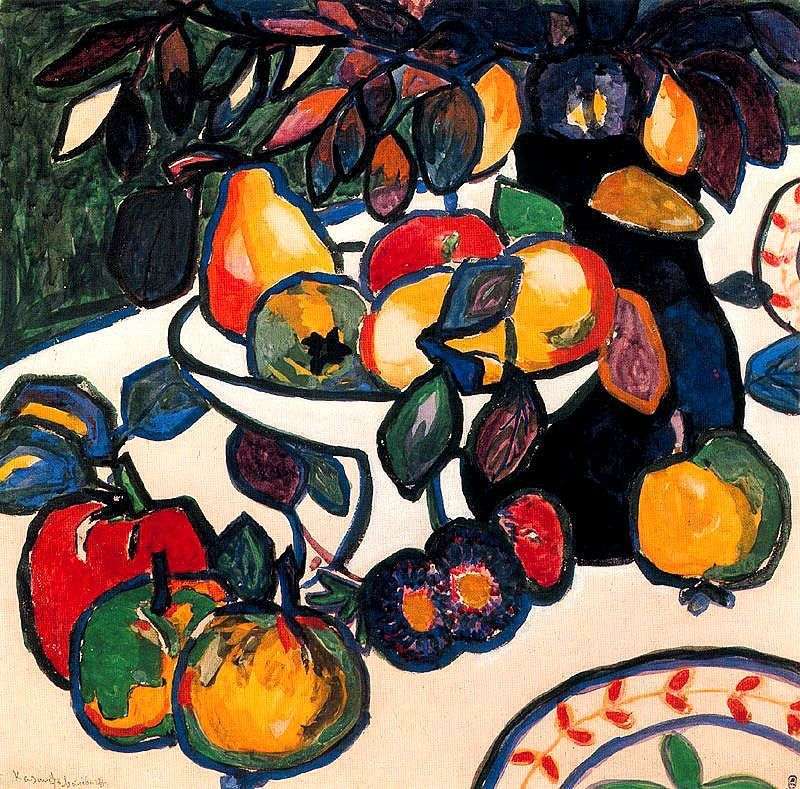 Still Life by Kazimir Malevich
Still Life by Kazimir Malevich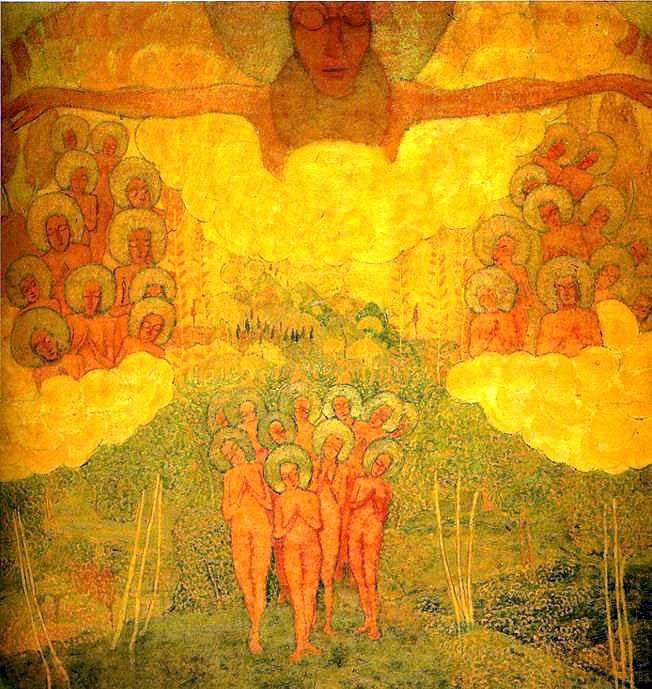 The triumph of the sky by Kazimir Malevich
The triumph of the sky by Kazimir Malevich